
When completed the trail will provide an important strategic link through the completion of Adelaide’s north / south rail trail network. The trail will connect the Barossa Valley with the Southern Vales Wine region, a distance of 140km (all rail trail).
The Gawler Rail Trail also provides linkage to several other cycle trails including a connection with the northern and southern ends of the Stuart O’Grady Bikeway.
Nearby Attractions
When completed the Gawler Rail Trail will
- Provide a linkage of the Adelaide CBD to the Barossa Rail Trail, Penfield Rail Trail, Dry Creek Trail and the Little Para River Trail, Stuart O’Grady Bikeway, Port River Bikeway, Stockade Rail Trail and Tapa Martinthi Yala Trail.
- Provides a loop trail with the Stuart O’Grady Bikeway.
Last updated: 19 September 2024
The Gawler Rail Trail is a Rail Side Trail which follows the rail line from Adelaide to Gawler. The trail is a shared use path with some on road sections (sharrows). There is a 350m section of compacted rubble path, indicating that the Gawler Rail Trail is, and will be, a work in progress for some time to come.
The rail trail is not a scenic ride; however it serves an important task in that it links the Adelaide CBD to many trails to the north of Adelaide.
The Gawler Rail Trail, which will ultimately be 45km long, is a State Government long term project. The trail section between the Adelaide CBD and Dry Creek is substantially complete (approximately 25% of the total trail length) and several smaller sections along the remainder of the trail are being progressively completed. The Gawler rail trail is a rail-side trail which follows the operational Adelaide to Gawler railway line and comprises a mixture of shared use paths and bike lanes on quiet minor roads. The trail moves through a variety of landscapes such as inner urban residential areas, industrial factories, rail yards and wetlands.
Section Guides
Adelaide CBD to Islington Rail Yards – 9km
Like many rail-side trails in inner city suburbs, space is limited and trails tend to follow unusual routes and signage is often not as good as it could be. To assist with navigation along the trail the following information is provided.
- The trail commences from the Adelaide CBD on the banks of the River Torrens and adjacent to the Adelaide Railway Station.
- Proceed west along the River Torrens, past the Torrens Lake Weir and turn left into the pedestrian/cyclist railway underpass.
- Continue along the edge of the Torrens River, cross the high level bridge of the River, just before Port Road.
- On the other side of the river continue straight on, using the bridge to cross over the Outer Harbor railway line. Follow the path to the left and then turn right, and then turn right again when the path gets to Park Terrace.
- Follow the trail as it slowly curves to the right through the parklands until it reaches the railway line. Use the crossing to cross the line and follow the trail to the left which passes the former North Adelaide Railway station. Just past the station car park, take the trail to the left and follow the rail line.
- Follow the quiet Park Terrace until it returns back to the rail line where you can cross Hawker Street. The streets are marked with sharrows which indicate the direction to be followed.
- Once over Hawker Street turn left into Gilbert Street and then left into Albert St / Gutherie Street which can be followed right through to Torrens Road.
- Turn left at Torrens Road and use the footpath to travel a short distance down to the rail line where the trail travels under the Torrens Road overpass. The overpass is a good place to stop for a rest. There is a bike repair station under the overpass.
- The trail continues on northward along Davenport Terrace for 2km, where a rubble track on the edge of a future property development can be used for a small distance. This section of trail will be upgraded once the property development and stormwater drainage works have been completed. When nearing the Regency Road railway bridge, take the railway pedestrian crossing on your left. Once over the railway line, cross the road and use the underpass to get to the other side of the Regency Road. There is often broken glass in the underpass so take care when riding through.
- Turn left coming out of the underpass, cross Pedder Crescent and follow the cycle trail, until you reach the traffic lights at Naweena Road. Cross Naweena Road, turn right, and follow the on-road bike lane for 2.7km. When the road veers left, take the shared use path on the right. There are good blue and white directional signs along this section.
- The shared use path will take you over the intersection where you can continue to follow the path to an underpass which will take you under Grand Junction Road. The trail has taken a slight detour as the Islington Rail yards and associated industrial precinct prevent the trail from following the Gawler railway line.
Islington Rail Yards to Dry Creek – 5km
- Once through the Grand Junction Road underpass, cross the road and, slightly to your right, you will see the trail recommence.
- Follow the trail through the industrial estate (not the most scenic or fragrant ride) for 1.2km and cross Cormack Road using the pedestrian crossing. The Gawler Railway line is now adjacent to the trail on the right.
- Once over Cormack Road, follow the trail to the left and then across Magazine Road and turn right and follow Magazine Road northward for a distance of 450m and turn right into Henschke Street. Follow Henschke Street to the end and you will see the trail commence on the left. The Gawler Line is now on the right.
- Follow the trail for 1.75km until it reaches Salisbury Highway.
The trail ends at Salisbury Highway and does not continue on to Mawson Lakes at this stage.
Side Trails
Magazine Rail Trail – 500m
Henschke Street, which is part of the Gawler Rail Trail, also forms part of the Magazine Rail Trail. The area slightly to the west of Magazine Road was originally a 600mm gauge railway, which ran a horse drawn train, from the Dry Creek rail yards, along Henschke Street and Magazine Road, to the explosives storage area at the northern end of Magazine Road. As residential and industrial development moved closer to the explosives storage huts, the risk became too great and the storage facility was relocated.
Magazine Road is therefore a rail-side trail. This trail is important as it connects the Gawler Rail Trail to the Port River Bikeway and Tapa Martinthi Yala shared use path (follows the Northern Connector Freeway M2).
Wetlands Trail – 2km
There is a scenic alternative to the section of the Gawler Rail Trail, from Henschke Street to Salisbury Highway, that can be used to get to the end of the trail at Salisbury Highway.
Follow Magazine Road until you reach the Port Expressway. Turn right and follow the rubble path for 200m where the path heads into the wetland area. The trail continues on through the wetland with occasional narrow and low bridge crossings before it arrives back near Salisbury Highway.
Please note that this is not a formal path or trail and it can be described in some sections as being a goat track. Cyclists need to assess the risk associated with travelling on an unmade track through a wetland.
Other Trails that connect with the Gawler Rail Trail and Magazine Rail Trail
- Port Expressway Connection.
At northern end of Magazine Road, a shared use path veers to the left and follows the expressway, and the Barker Inlet Wetlands for 900m before passing under the expressway in what can only be described as a modified stormwater drain (it’s better than crossing the expressway but often a little damper).
Follow the shared use path and turn left onto a wider path/road which can be followed to a junction, known as Salt Pan Junction. At this point you have two options – turn left and follow the Port River Bikeway toward Port Adelaide (7.6km) or travel onward (north) on the Tapa Martinthi Yala (Kaurna term meaning “pathway to embrace today”) shared use path which follows the freeway (16.7km). Tapa Martinthi Yala connects with the Stuart O’Grady Bikeway which leads to Gawler (22.6km)

Cycle bridge over the Outer Harbour Rail line - July 21

passing the street side entrance to the former North Adelaide Railway Station - Feb 24

Exiting the Park Terrace overpass. Gawler rail line is on the left - Feb 24

Rest area under the Torrens Road overpass - Oct 23

Devonport Terrace with the Gawler railway line on the left - Oct 23

Rubble section of the trail approaching the Islington Station - Oct 23

Entrance to the tunnel under Regency Road - Oct 23

Heading north from Henschke Street. the Gawler line is on the right - Oct 23

Passing through the Wingfield Industrial area. the Gawler train can be seen in the distance - Oct 23

crossing a wetland near the Gawler Line at Wingfield - Oct 23
Do you know of a bike hire or transportation service on this rail trail that should appear here? If so, let us know at admin@railtrails.org.au.
Information and Links
See Services tab above for links to services and businesses along this trail
For further information, or to report any problems, please see contacts below:
City of Adelaide – City to Park Terrace
Ph: 08 8203 7203 or
cu******@ci************.au
City of Charles Sturt – Park Terrace to Torrens Road
Ph: 08 8408 1111 or
co*****@ch**********.au
City of Prospect – Torrens Road to Regency Road
Ph: 08 8269 5355 or
ad****@pr******.au
City of Port Adelaide Enfield – Regency Road to Greenfields Wetland
Ph: 08 8405 6600 or
se*****@ci*******.au
City of Salisbury – Greenfields Wetland to current end of trail
Ph: 08 8406 8222 or
ci**@sa*******.au
Contact Rail Trails Australia
To contact us about this rail trail, email sa@railtrails.org.au
Background Information
Traditional owners
We acknowledge the Kaurna people, the traditional custodians of the land and waterways on which the Gawler Rail Trail is constructed.
Rail line history
Gawler Railway
The Adelaide to Gawler line opened in1857 and within two decades lines spread from Gawler to the Barossa Valley, Mid North and Southern Flinders. Most of the lines that spread from Gawler have now been closed however the Gawler Line is still the most frequent and heavily patronised line in the Adelaide rail network. The line’s primary role was the movement of produce (agricultural and mining) to Port Adelaide for shipment interstate and overseas. The line was also the essential link between South Australia’s northern communities and Adelaide.
Magazine Railway
The Magazine Horse Drawn Railway was constructed in 1903 and was decommissioned in 1965. The 4.5km long 600mm gauge railway operated between the Dry Creek Railway Station and Broad Creek (a creek which discharged into the mangroves off Le Fevre Peninsula). The rail line transported explosives, delivered by boat to the Broad Creek jetty, to the magazine for storage, approximately 2.5km inland. When the explosives were required, they were transported by rail from the magazine to Dry Creek Railway Station, a further 2km inland, for shipment around the State. The horse drawn explosives railway operated for 62 years until it was replaced by a roadway and 2 trucks in 1965.
Development and future of the rail trail
The Gawler Greenway currently extends from the Adelaide CBD to Dry Creek, a distance of 14km. On completion to Gawler, the Trail will be 45km in length. Small sections of the trail are progressively being completed between Mawson Lakes and Gawler; however these sections do not connect nor do they have directional signage consistent with the completed Adelaide to Dry Creek section.
Recent trail improvement announcements
An 835m section of the trail will be constructed from the Elizabeth South Railway Station to Whitford Road, Elizabeth South. Work will be undertaken in 2024 by Playford Council.
An 800m section of the trail will be constructed between Kings Road and York Terrace, Salisbury Downs. The trail will be constructed on land, previously owned by Thomas More College, located between the Adelaide to Gawler rail corridor and the Thomas More College campus. Lighting and safety fencing will be installed along the path. The existing Kings Road pedestrian actuated crossing will be relocated 140m east to align with the trail and to provide a safer crossing place for Thomas More College students. The project, which will be jointly constructed by Salisbury Council and the Department for Infrastructure and Transport, is expected to be completed by late 2024.
Nearby Trails
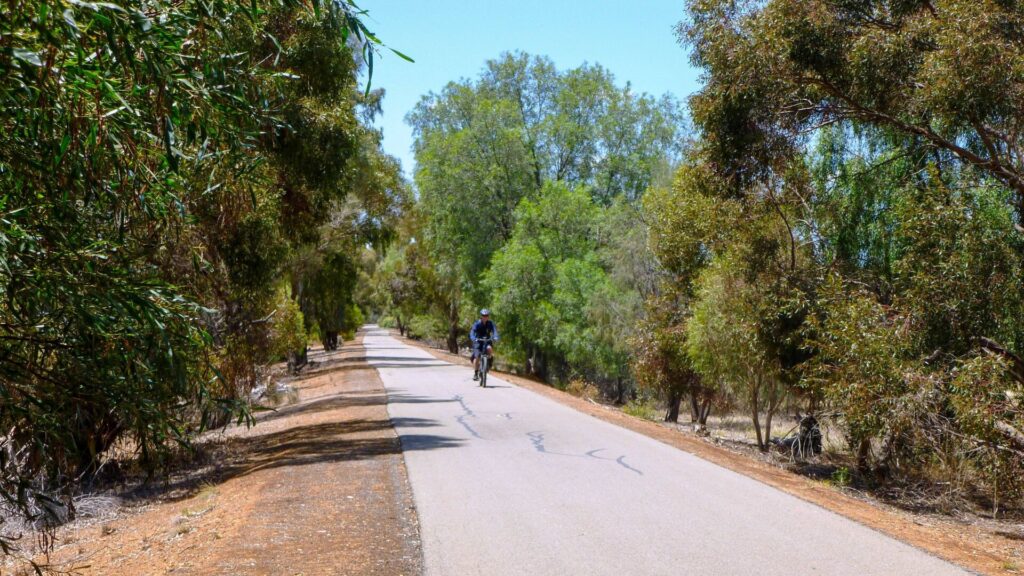
Parafield Rail Trail
15km north of Adelaide
3 km







Stockade Rail Trail
Pooraka, 11km north of Adelaide
2.6 km




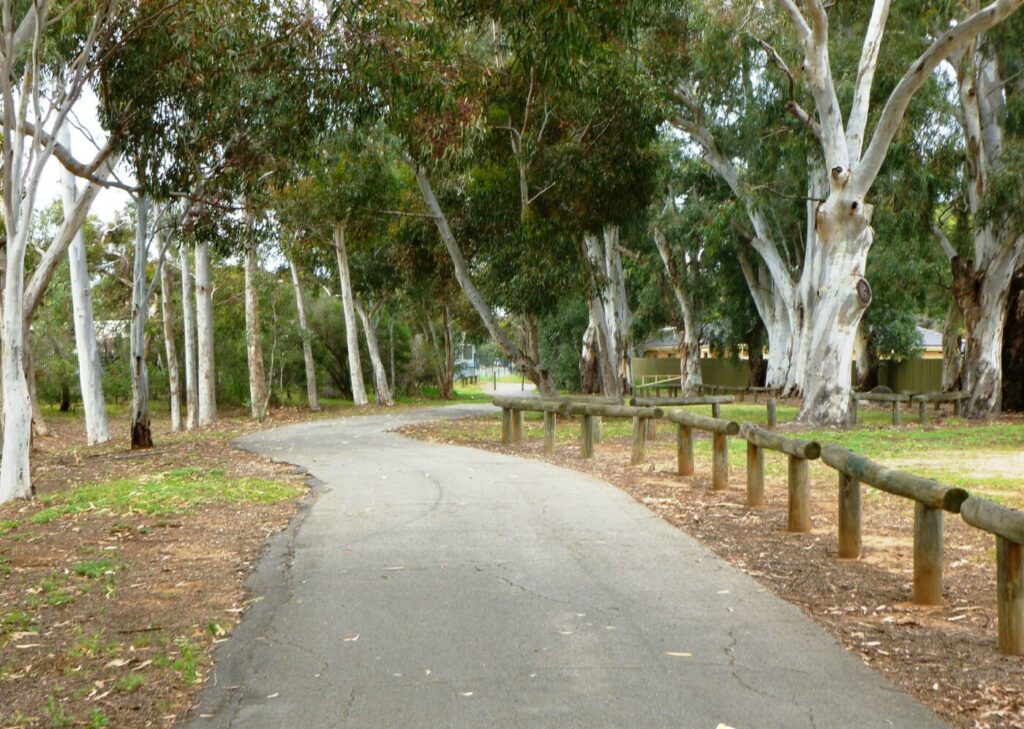
Penfield Rail Trail
Northern suburb of Adelaide
7 km






O-Bahn Busway Rail Trail
Commences from Adelaide CBD
16 km







Outer Harbor Greenway Rail Trail
Port Adelaide, 20km north west of Adelaide
23 km







Smithfield Magazine Rail Trail
Smithfield Plains, 33kms north of Adelaide
3.5 km






Westside Bike Path
2km West of Adelaide.
9 km







Mike Turtur Bikeway
Between Adelaide city and Glenelg
9 km







Coast Park Rail Trail
12 Km west of Adelaide CBD
34 km







Marino Rocks Rail Trail
Marino Rocks
16 km







Adelaide Hills Amy Gillett Rail Trail
Mount Lofty ranges, 49km east of Adelaide
16 km








Barossa Rail Trail
Barossa Valley - between Gawler and Angaston
43 km






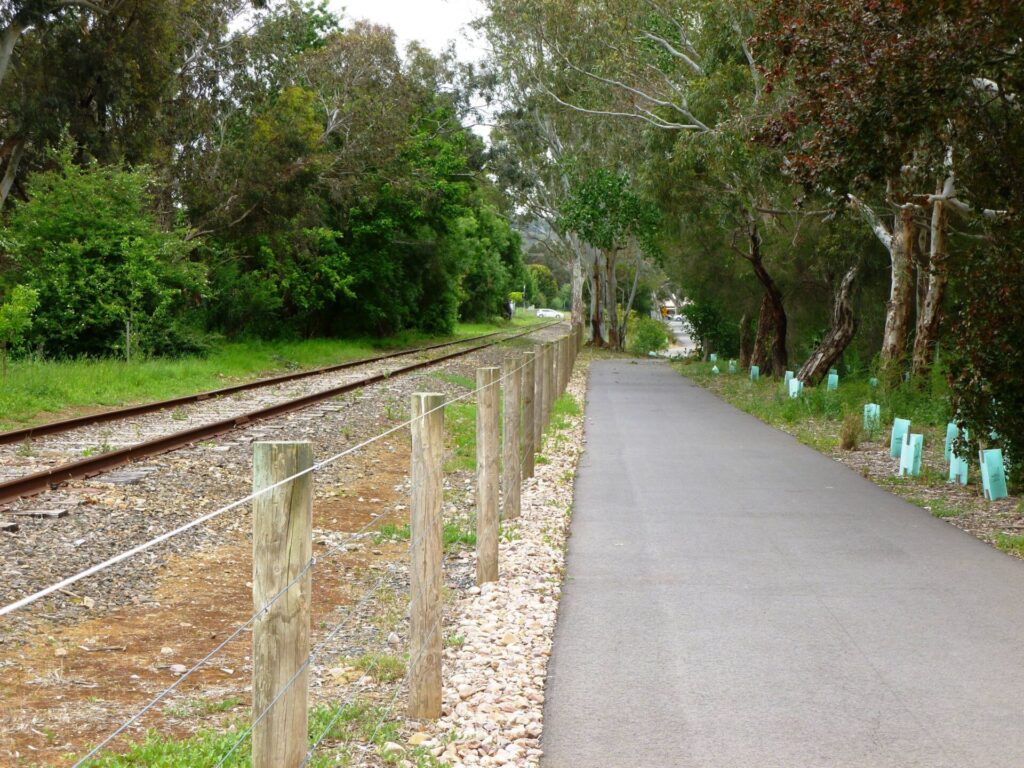
Mount Barker Rail Trail
33km southeast of Adelaide
5 km







Coast to Vines Rail Trail
Southern Adelaide Suburbs
37 km








Kapunda Rail Trail
78km north of Adelaide
1 km






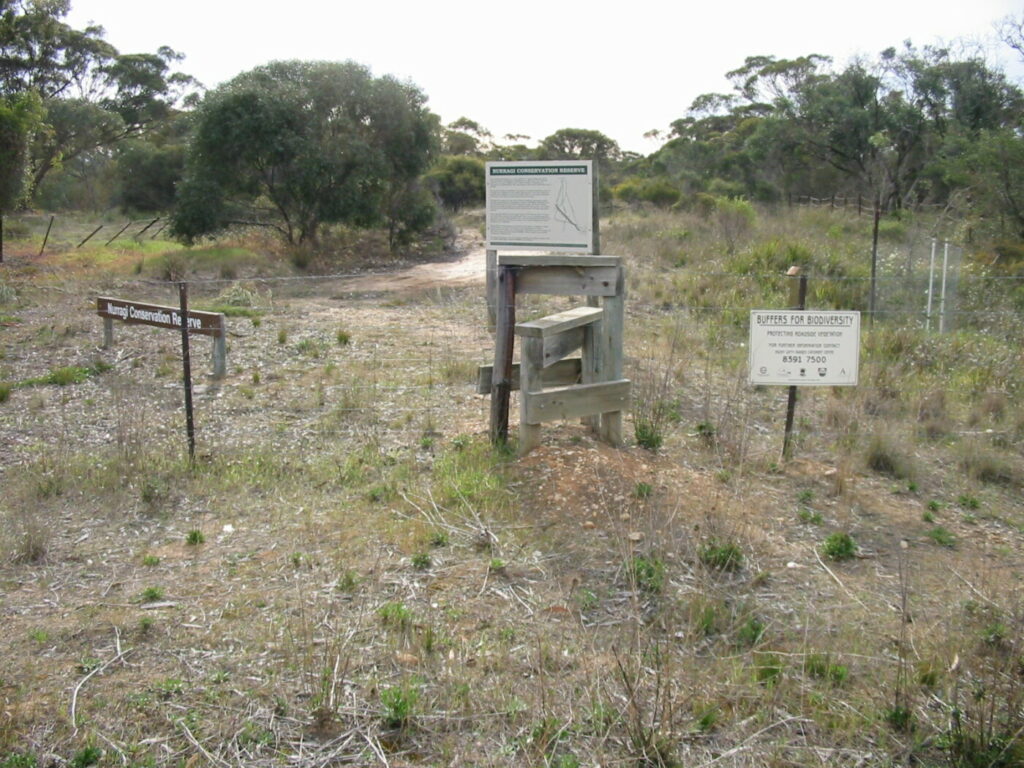
Nurragi Conservation Reserve
Milang approx 70km south east of Adelaide
12 km


Encounter Bikeway
Between Goolwa and Victor Harbour on the Fleurieu Peninsula 90km south of Adelaide
28 km






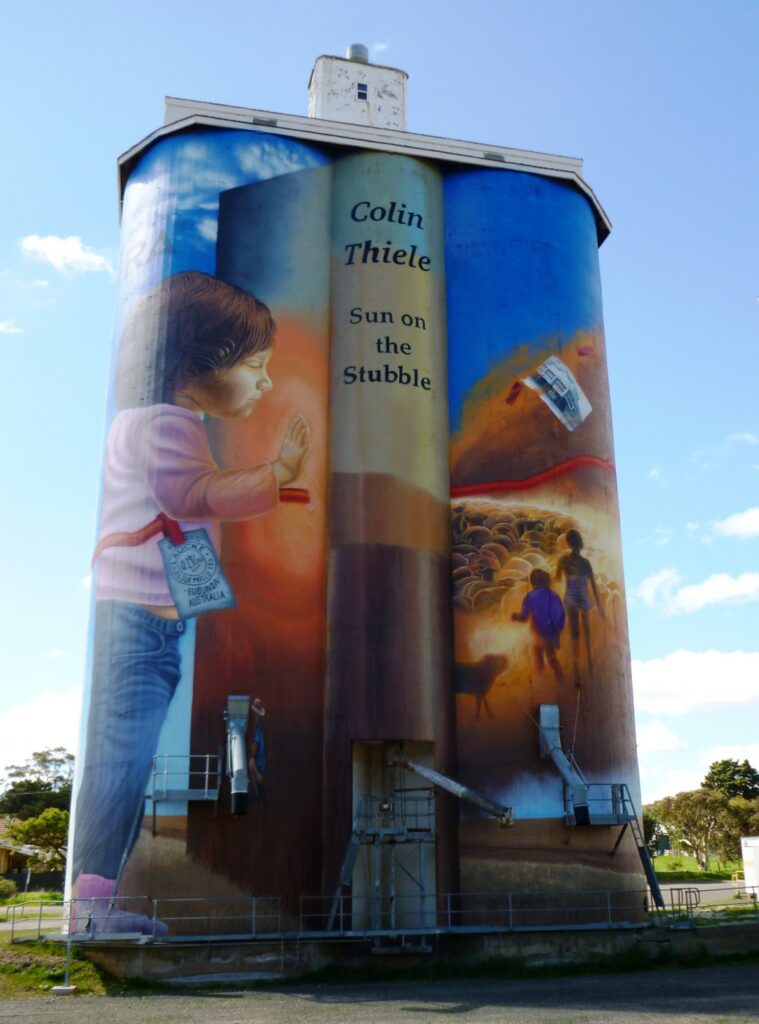
Eudunda Rail Trail
112km north of Adelaide
1 km






Riesling and Rattler Rail Trail
130km north of Adelaide
53 km






Copper Rail Trail
100km north of Adelaide
26 km




Shamus Liptrot Rail Trail
100km north of Adelaide
11 km




